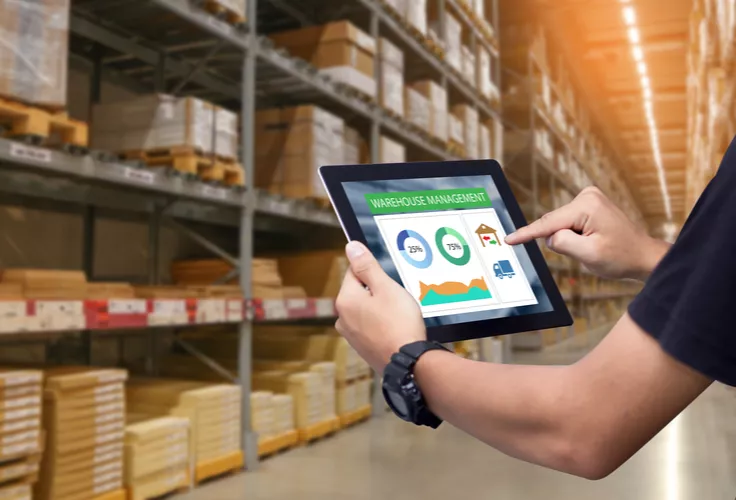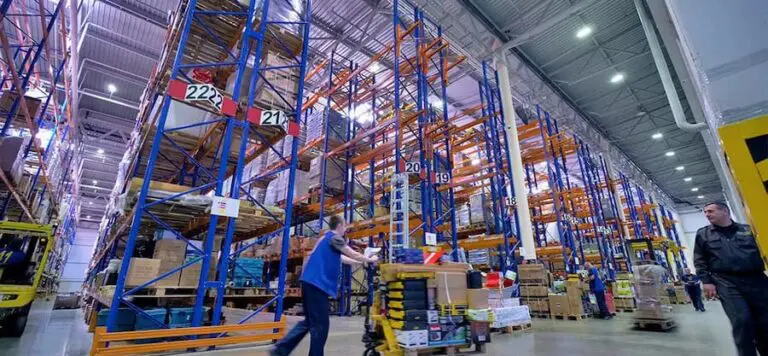Inventory Management and How Technology Keeps Improving It
Managing inventory requires knowing where every product is in the supply change process. Technology has advanced to bring more clarity and accountability in this operation to boost competitiveness.
Inventory management technology involves tracking the flow of products in and out of your warehouse. It allows you to know what stock is on shelves, the number of available products, and the sales process of orders as the products are picked and packed for shipments. A warehouse can ensure that products do not get lost or damaged during the supply chain by having efficient inventory management processes.
This process also helps to update inventory records in data network systems. Sales representatives can view data to instantly know the amount of inventory available to customers and at what price. It also allows the right amount of inventory to be ordered to replenish stock without ordering too much or too little.
Warehouse operations continue to change to satisfy how customers shop and order products. As a result, inventory management processes are also changing. Today, new technologies are streamlining the process to make it more accurate while reducing repetitive tasks.
TECHNOLOGY’S ROLE IN INVENTORY MANAGEMENT
Technology plays a vital role in how versatile inventory management processes are for a company. It offers a competitive advantage to every business model, including Ecommerce companies where customers may not speak to an actual sales representative throughout the order process. The technology offers several key features, which may include:
- Real-time data management:Data is updated in real-time throughout every computing system connected to the network. This process provides greater clarity on actual inventory levels and customer sales order history.
- Centralization record-keeping:All systems become centralized while still allowing employees to work from any location. Inventory management technology allows for greater information-sharing between departments that can boost communication and collaboration.
- Scalability: This technology allows companies to scale their operations so they always remain competitive. Many systems allow you to select the features that will work for your current needs and add more options as the business grows.
- Reporting and analysis: Inventory technology management provides reporting and analysis features. These features help gather the right data at the appropriate time, analyze the data based on specific parameters, and generate meaningful reports to benefit the company.
The type of inventory technology management features that are available will depend on the vendor. Some vendors may offer the basics, while others will allow for integrations into other systems. In addition, some technology may be tailored for a specific industry or business model, such as Ecommerce or food sales.

EVOLUTION OF INVENTORY MANAGEMENT
The technology used today has changed quite drastically from when it was first implemented in supply chains. Manual counting was the norm during the Industrial Revolution, as this slow process caused inaccuracies and hindered business growth.
Let’s check out how technology has evolved from this method to systems that are used today:
- Punch cards:As a step up from manual counting tasks, punch cards offered more efficiency to companies after the Industrial Revolution. Holes would be punched into the card to match cataloged inventory. Then the cards would be fed through a card reader connected to a computer to update records. This process is seldom used today.
- Barcodes:Barcodes were created around the 1940s. A UV light-sensitive ink was placed on products as they came into the warehouse that held important data. This data included the type of product, price, location, origin, and other information. The barcode would be scanned by a reader as the data was manually inputted into network systems. Barcode technology is still used today as the technology continues to evolve.
- RFID microchips:Radio frequency identification (RFID) is a type of technology that is used today in addition to barcodes. A tiny microchip is placed on the products. A barcode reader scans the microchip as the data is automatically uploaded to network databases.
BENEFITS OF INVENTORY TECHNOLOGY MANAGEMENT SYSTEMS
An inventory management system’s main benefits are using advanced technology to promote more visibility and accuracy in the supply chain. The technology allows you to know where every product is in the warehouse.
The tech also allows for better order fulfillment and procurement. Sale representatives know what inventory is available at all times to fill orders and can make adjustments when products start to run low. In addition, many inventory management systems automate the procurement process when product levels reach certain thresholds so shipments can arrive on time without any order delays.
Lastly, inventory management helps to provide cost-savings and increase operational efficiency by automating redundant processes. Fewer inventory counting errors may be committed that will cause problems and drive up costs.
WSI’S INVENTORY MANAGEMENT SOLUTIONS
Technology is ever-evolving. You want to have the right tech and tools available to improve warehouse accuracy and to track products in your supply chain. At WSI, we want to ensure that your products reach their destinations on time and at the right budget.
We employ inventory management solutions to your supply chains to better manage the movement of inventory, procure products, and provide comprehensive logistical strategies. Learn more about our solutions by contacting WSI today.
About the Author

WSI Team
WSI is one of the largest privately held 3rd party logistics companies in the U.S. and spans a nationwide distribution network with global logistics reach.








